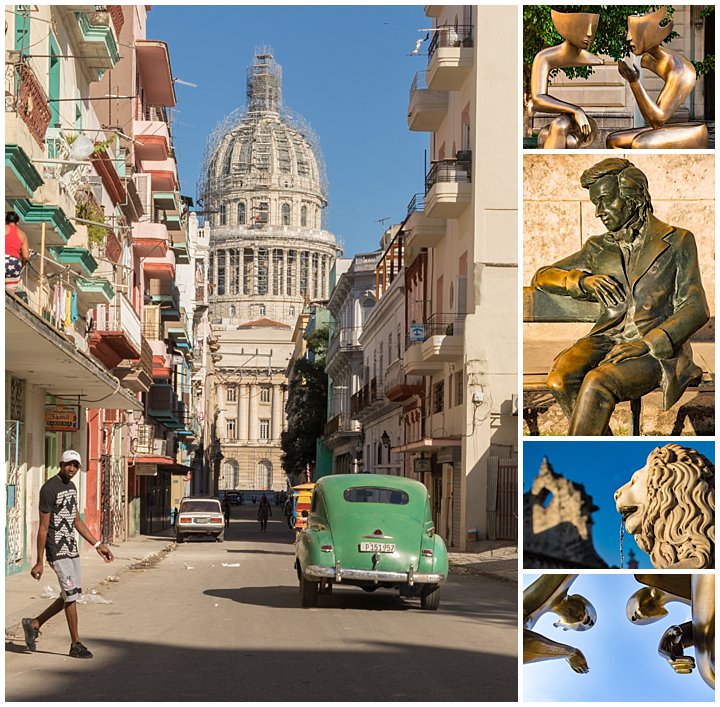
We spent a few hours walking the area around the capitol building (left), which is modeled after the White House in Washington, DC. Our first sighting of it was in a painting at the Casa Particular we were staying at. It baffled us where the scene was from, since it seemed a combination of the US building and Cuba streets, until we came across the building ourselves. As seen above, it is currently under renovation, so cannot be entered by tourists. Surprisingly, buildings right across the street from the capitol where totally dilapidated.
About two blocks from this street, there is a large sign spanning a street announcing “Welcome to Chinatown,” much like similar signs we have seen in both San Francisco and Manhattan. We entered, and were surprised to see only one Chinese business in sight — a Chinese bar directly under the sign. When we asked our Cuban guide about it, he said that it was a historic sign, but there are very few Asians in the area any more.
There are many statues around town, with images above-right only showing a tiny sampling.
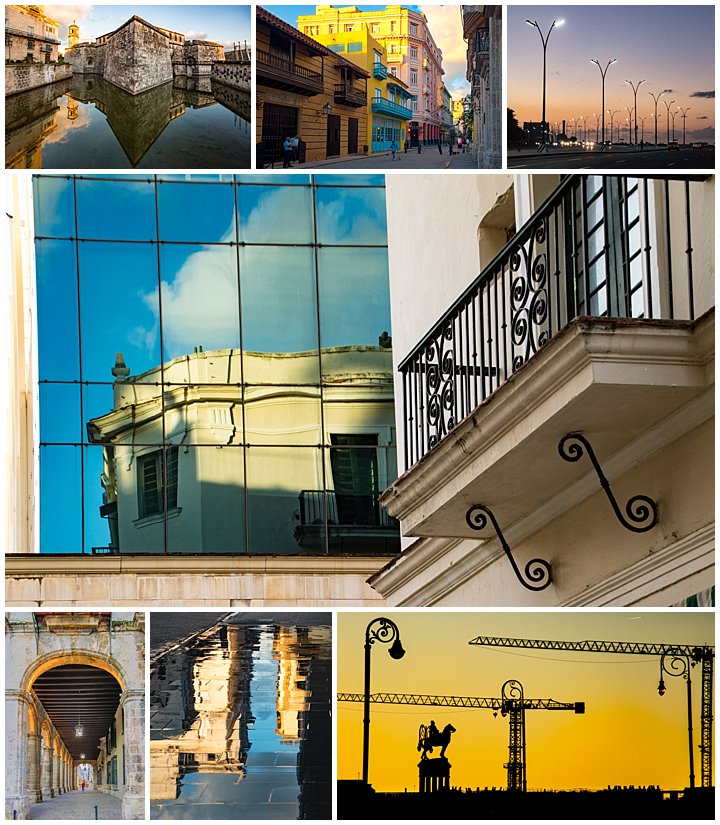
One of our sunrise photo shoots took us through the various squares around Old Havana, shown above.
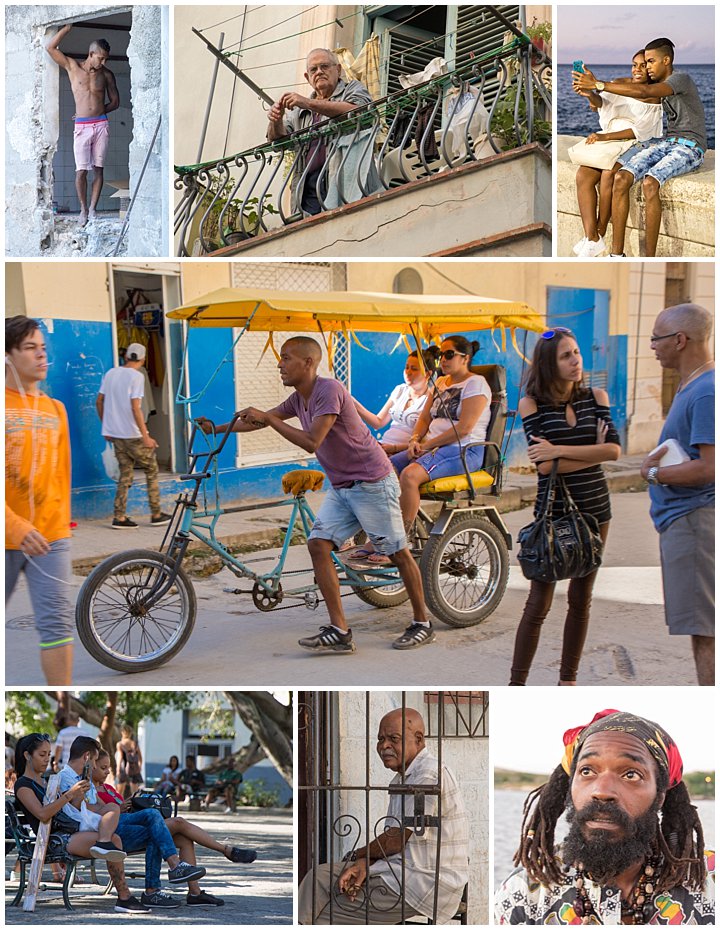
Watching people is always a big part of visiting any new city, and Havana was no exception. One thing we quickly noticed was that the central park in each city had hundreds of people sitting around staring at their phones (lower left). Internet is still illegal in private homes, though a very few government owned cafes were allowed to offer such access starting in 2007. In 2015, Cuba opened the first public wifi hotspots, which required a special card to access, at a rate of $15 per hour (remember, the official Cuban official wage is $25 per month), putting it out of reach of all but the most wealthy.
Since then, internet has now been made available at most central parks in most cities throughout Cuba. The cost has dropped, first to $10, then to $5 per hour. A few months ago, it was lowered again to $2, and when we went to buy cards, the price had dropped yet again to $1 per hour. The cards are difficult to buy though (we stood in line for almost an hour to buy some), and difficult to use (must enter two 10-digit numbers, and the card then becomes useless after one hour of use, requiring another card and set of digits to continue access). However, every park was swamped with people accessing the internet on their phones from mid-day until well into the night.
Unfortunately, with that many people crammed in each wifi location, the internet performance was slow — when you are able to log on at all. It often took us a dozen or more attempts before we could even get logged in (typing all 20 digits on each attempt). When we finally did get in, the effective speed was roughly the same 1200 baud of the modems we used in California in the 1980’s.
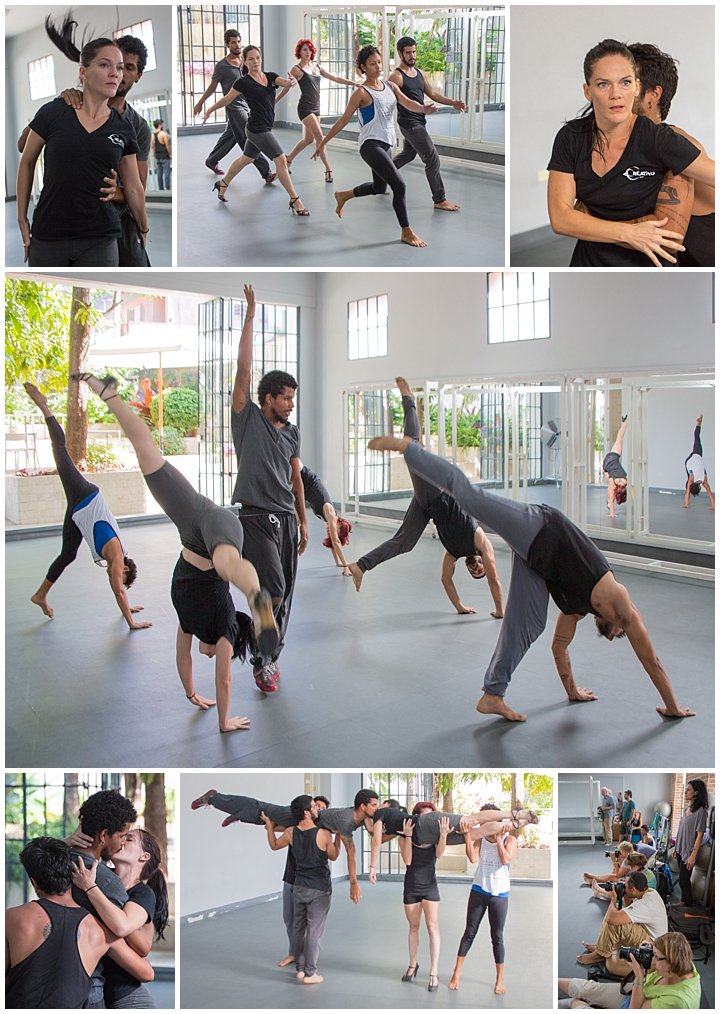
One highlight was a visit to Danzabierta, a local avant garde dance company. Susana Pous is the artistic director and choreographer of the modern dance troupe, and has personally performed throughout the world.
They performed a number of compelling and innovative dances for us, with the above being only a small sample of 700 images we shot in that session. Lower-right shows our photo group lined up on one wall happily snapping away during their performance.

After their choreographed dances, the performers modeled for us. Susana Pous is shown upper-right.
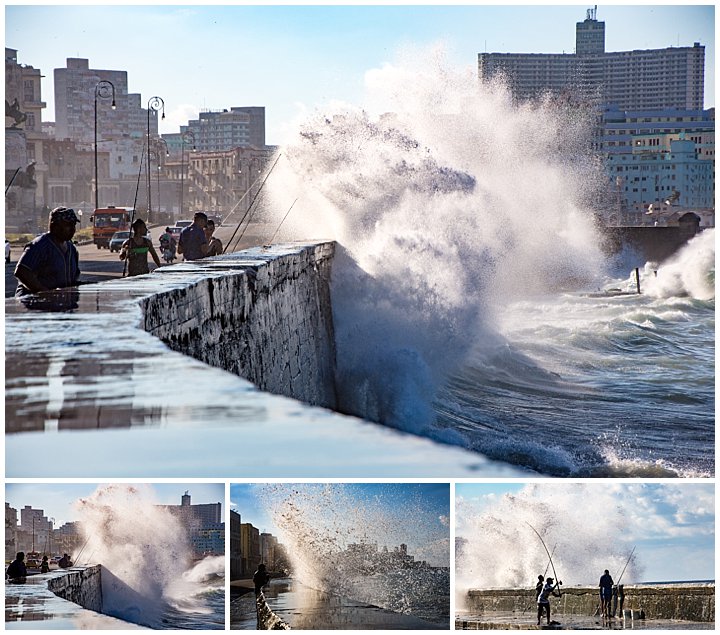
One day in Havana, we were driving along the Malecón and saw the waves crashing over the wall. I called out that we should stop and photograph the scene, which we did. Again, this is a big benefit of being on a photography tour over other types of tours. When there is something photographically interesting, we stopped and took advantage of the situation.
